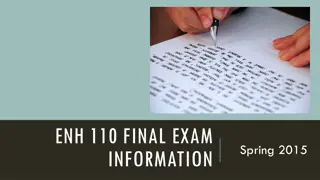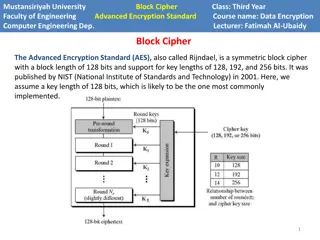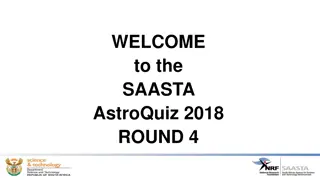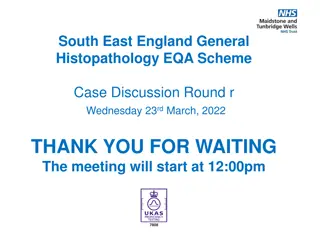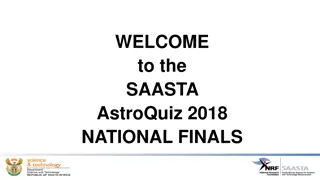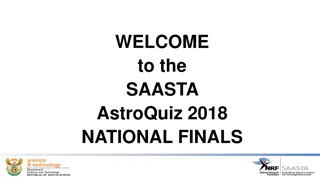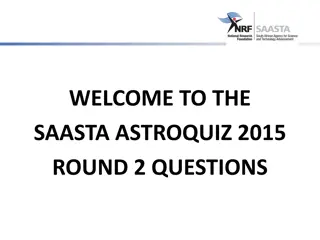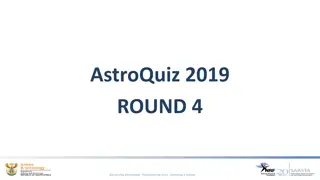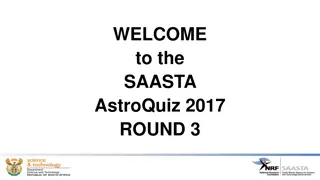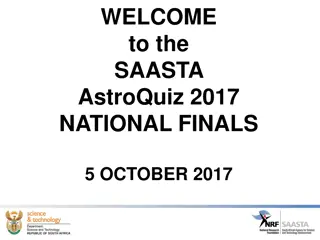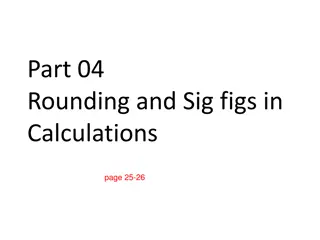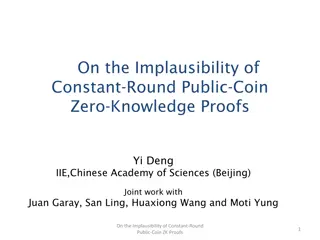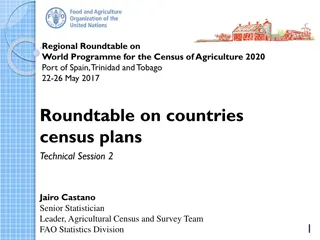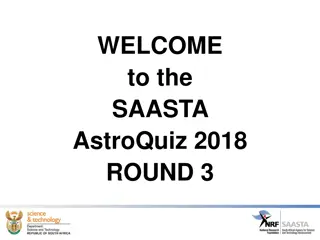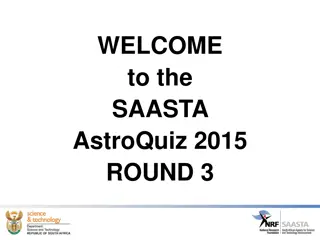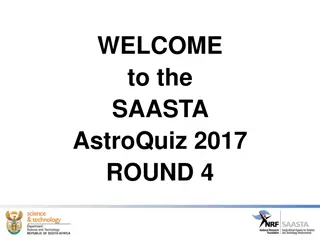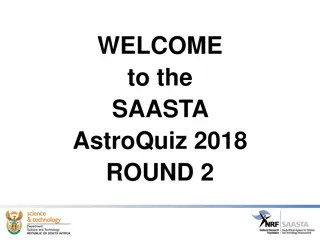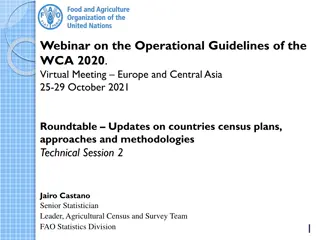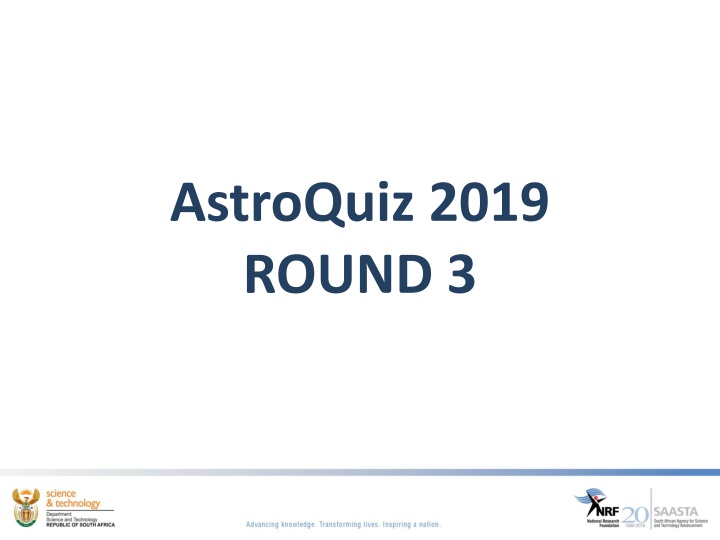
AstroQuiz 2019 Round 3: Test Your Space Knowledge
Test your space knowledge with AstroQuiz 2019 Round 3! Answer questions about stars, planets, and the universe within 60 seconds. Discuss with your team and use calculators if needed, but no internet allowed. Explore topics from Proxima Centauri to lunar phases and more.
Uploaded on | 0 Views
Download Presentation

Please find below an Image/Link to download the presentation.
The content on the website is provided AS IS for your information and personal use only. It may not be sold, licensed, or shared on other websites without obtaining consent from the author. If you encounter any issues during the download, it is possible that the publisher has removed the file from their server.
You are allowed to download the files provided on this website for personal or commercial use, subject to the condition that they are used lawfully. All files are the property of their respective owners.
The content on the website is provided AS IS for your information and personal use only. It may not be sold, licensed, or shared on other websites without obtaining consent from the author.
E N D
Presentation Transcript
AstroQuiz 2019 ROUND 3
RULES You only have 60 seconds to answer each question. You are allowed to discuss amongst yourselves as team members Calculators may be used if needed. No internet is to be used, therefore the use of cellphones is also prohibited. The judge s decision is final.
QUESTION 1 Which of the following is false about Proxima Centauri, the 2ndclosest star to Earth? A. It is a red dwarf and discovered in 1915 B. It is 4,2 light years away from Earth C. It is a red dwarf and discovered in 1815 D. It is part of the three star Alpha Centauri system
QUESTION 2 One can jump much higher on Earth than on the Moon. A. True B. False
QUESTION 3 The reason why one can jump much higher on the Moon than on Earth is because _____ on the Moon. A. there is no atmosphere. B. the magnetic field is weaker. C. there is no water. D. gravity is weaker.
QUESTION 4 During which Moon phase can we experience a total solar eclipse? A. Full Moon B. New Moon C. First Quarter D. Last Quarter
QUESTION 5 Why do stars twinkle? A. Because they get smaller and bigger B. Because of turbulence in our atmosphere C. Because they fuse different amounts of hydrogen D. Because their magnetic field varies in strength
QUESTION 6 Why has the Universe cooled down to about 3 degrees above absolute zero? A. There were more stars earlier on B. There were fewer stars earlier on C. It has become bigger D. It is due to climate change
QUESTION 7 Which pair of planets below, represent the smallest planets within their own groups? A. Mercury & Saturn B. Jupiter & Earth C. Neptune & Mercury D. Mercury & Uranus
QUESTION 8 At what speed does Earth go around the Sun? A. 9,8 km/s B. 11,2 km/s C. 29,8 km/s D. 23,9 km/s
QUESTION 9 Big stars live longer, because they have more hydrogen to fuse than small ones. A.True B. False
QUESTION 10 A starburst galaxy is A. a galaxy with stars continually bursting. B. a galaxy that produces bursts of intense light in a regular way. C. a galaxy with very high star birth rate. D.None of the above
QUESTION 11 One of the definitions of a Blue Moon is that it is a second full moon in a month. When in 2015 did we have a blue moon? A. May B. June C. July D. August
QUESTION 12 Why does a star at the end of its life collapse? A. Its electrons generate a massive pressure B. There is no heat pressure any more C. The magnetic field has become stronger D. The electric field has weakened
QUESTION 13 Constellations are A. clusters of stars very near each other in space. B. groupings of planets in the sky. C. patterns of stars in the sky. D. close associations of stars and visible planets.
QUESTION 14 All the stars in a constellation are about the same distance from Earth. A. True B. False
QUESTION 15 How many days are there between the waxing quarter and waning quarter Moon? A. 29 B. 30 C. 14 D. 31
QUESTION 16 Which celestial body has been selected for possible exploration as it has features that resemble that of the Earth? A. Neptune B. Pluto C. Mars D. Uranus
QUESTION 17 Light travels at a speed of A. 300 000 m/s B. 30 000 km/s C. 300 000 000 m/s D. 30 000 m/s
QUESTION 18 What is the most abundant gas found in Venus' atmosphere? A. Nitrogen B. Hydrogen C. Oxygen D. Carbon Dioxide
QUESTION 19 The most abundant gas found in Earth s atmosphere is A. Carbon Dioxide B. Nitrogen C. Hydrogen D. Oxygen
QUESTION 20 Which of the following is a gas planet and has at least 27 moons? A. Venus B. Mercury C. Neptune D. Uranus
QUESTION 21 Which of the following is an inner planet and is usually referred to as morning or evening star? A. Mercury B. Neptune C. Venus D. Uranus
QUESTION 22 The largest optical telescope in Southern Africa is the A. Hubble Space Telescope B. Innes Telescope C. South African Large Telescope D. High Energy Stereoscopic System
QUESTION 23 What is the name of the South African Square Kilometre Array forerunner? A. Pathfinder B. Explorer C. MeerKAT D. Square Kilometre Array
QUESTION 24 Why do we not have lunar or solar eclipses every month? It is because A. we cannot see the Moon everyday of the month. B. the Earth's orbit around the Sun is not in the same plane as the Moon's orbit around the Earth. C. of the speed at which the Moon is orbiting the Earth. D. of the speed at which the Earth is orbiting the Moon.
QUESTION 25 The second nearest star to us after the Sun is Proxima Centauri. What is the third nearest star to us? A. Barnard s Star B. Sirius C. Antares D.Alpha Centauri
QUESTION 26 Of the five officially recognised dwarf planets in our solar system, Pluto is the largest, followed by A. Eris, Haumea, Makemake, Ceres B. Eris, Haumea, Makemake, Ceres C. Eris, Ceres, Makemake, Haumea D. Eris, Makemake, Haumea, Ceres
QUESTION 27 During a total solar eclipse the Moon s shadow causes a narrow path of total darkness across the Earth. What is this path of total shadow called? A. Penumbra B. Corona C. Umbra D. Luna
QUESTION 28 Proxima Centauri is approximately 4,22 light years away from the Earth. How far is it in km given that 1 light year = 9,46 x 1012km? A. B. C. 3,992 x 1013 D. 39,92 x 1012 2,241 x 1013 22,41 x 1012
QUESTION 29 Whilst on Earth the Sun rises in the east and sets in the west, on Venus A. we will never know from where the Sun sets and rises because of the planet s thick atmosphere. B. the Sun also rises in the east and sets in the west. C. there is no sunrise or sunset because Venus does not rotate around its axis. D. the Sun rises in the west and sets in the east.
QUESTION 30 A solar eclipse occurs during the night whilst a lunar eclipse occurs only during the day. A. True B. False
THANK YOU FOR PARTICIPATING GOOD LUCK TO ALL!


